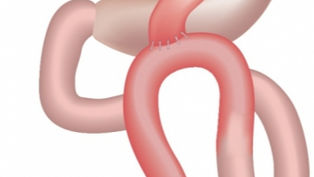top of page
Browse by category
Search


PapB peptides could help build next-generation GLP-1 drugs
Researchers at the University of Utah have uncovered an enzyme, PapB, that can ‘tie off’ therapeutic peptide into tight rings, a process known as macrocyclisation. This enzymatic trick could help drug developers make stronger, longer-lasting versions of GLP-1 medications. Graphic illustrates the PapB enzyme that ties off peptides (Credit: American Chemical Society and University of Utah) Creating cyclic peptides is valuable because these ring structures make drugs more stable


Nineteen states had adult obesity rates at or above 35 percent
Nineteen states had adult obesity rates at or above 35 percent in 2024, down from 23 states in 2023 (Figures 1 and 2), a first time decrease in the number of states at or above the 35 percent level for this dataset. The findings were featured in the ‘State of Obesity 2025: Better Policies for a Healthier America’, released by Trust for America’s Health (TFAH), a non-partisan, non-profit organization focused on public health research and policy. Figure 1: Adult Obesity Rate by


New definition of obesity indicates dramatic increase in prevalence of obesity
The prevalence of obesity in the US could rise sharply under a new definition of obesity released earlier this year by the Lancet Diabetes and Endocrinology Commission . Researchers from Mass General Brigham found that when applying the new criteria, which expands upon the traditional use of body mass index (BMI) to include measures of body fat distribution, the prevalence of obesity increased from about 40 percent to about 70 percent among over 300,000 people included in the


Journal watch 15/10/2025
Welcome to our regular round-up of the latest bariatric and obesity-related papers published in the medical literature. As ever, we have looked far and wide to give you an overview of papers including dumping syndrome post-OAGB, the economic impact of bariatric surgery, boredom and stress as predictors of loss of control eating after surgery, increased physical activity associated with greater fat mass loss following MBS, MBSAQIP risk/benefit calculator predicting weight loss


Despite positive outcomes from OAGB, improvements required in reporting of surgical techniques, outcome definitions and long follow-up
A scoping review by researchers from the US and Mexico have reported that although one anastomosis gastric bypass (OAGB) is an effective metabolic and bariatric procedure with favourable outcomes in weight loss and disease remission, heterogeneity in surgical techniques, outcome definitions, and limited follow-up time to assess long-term outcomes, emphasise the need for standardised reporting and further high-quality long-term studies to guide patient selection and decision m


Continual postoperative monitoring of boredom and stress, could help prevent post-surgical loss of control eating
Researchers from the US have reported continual postoperative monitoring of boredom and stress, particularly two to three years after surgery, could help prevent loss of control eating (LOCE) after metabolic and bariatric surgery (MBS), and thus support the long-term psychosocial wellbeing of patients after MBS. Loss of control eating is defined as the subjective experience of loss of control while eating regardless of the amount of food consumed and has emerged as a salient
Browse by tag






bottom of page

